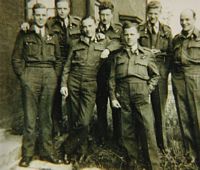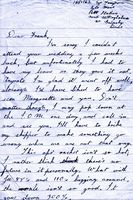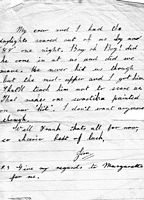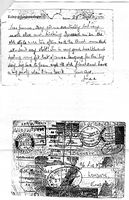550 Squadron Photos
F/O S C Beeson and Crew
PA991 was a 550 Sqdn Lancaster lost on the Wemars/Cappel operation on 27 Aug 1944. Crewed on this operation as follows:
- F/O S C Beeson (P) PoW
- Sgt K J R Hewlett (F/Eng) PoW
- S/L K MacAleavey (Nav) PoW
- F/Sgt F Neal (A/B) PoW
- Sgt J K Norgate (W/Op) KIA
- Sgt H S Picton (MU/AG) KIA
- Sgt J A Trayhorn (R/AG) KIA
This was the last of the long series of raids on the German flying-bomb launching and storage sites in the Pas de Calais area, which was captured by Allied ground troops a few days later. There was 1 aircraft casualty, the 550 Squadron Lancaster PA991, which had just bombed the Wemars/Cappel launching site near Amiens, received a direct hit from a flak battery near Dunkirk. The Lancaster went down in flames and exploded.
The pilot and three other members of the crew escaped by parachute, but the wireless operator and the two gunners were killed. Sgts Norgate, Picton and Trayhorn were thus the last fatal casualties in Bomber Command's campaign against the V-1 flying bomb. The remaining crew members became PoWs.
The entry on the 550 Squadron Roll of Honour is available here.
Other information about the flight and the target available here.
F/O Beeson and Crew Photographs
Thanks to Lee Norgate (nephew of Sgt John Norgate W/Op) for the following photographs.
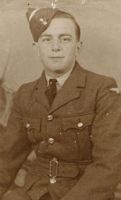 |
1620610 Sgt John Kenneth Norgate W/Op KIA 28/08/1944
Thanks to Lee Norgate for making the photo available |
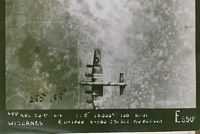 |
Bombing Photo taken from Lancaster PA991 BQ-E, 20/07/1944
Thanks to Lee Norgate for making the photo available |
F/O Beeson and Crew Photographs
Thanks to Phil Trayhorn (nephew of Sgt James (Jimmy) Trayhorn R/AG) for the following photographs.
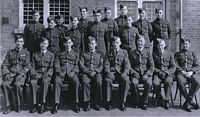 |
James Trayhorn (group photo) |
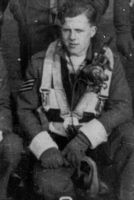 |
James Trayhorn, 550 Sqdn 1944 |
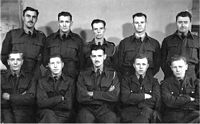 |
Jimmy's RAF Crew |
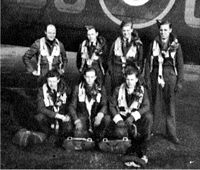 |
Beeson crew, PA991 "E" |
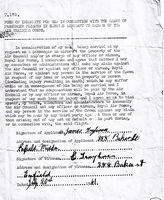 |
James Trayhorn RAF Indemnity Form |
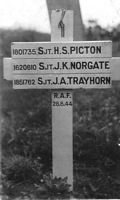 |
Graves of Sgts Picton, Norgate amd Trayhorn |
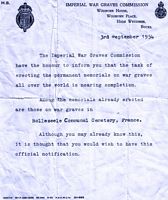 |
Letter from War Graves Commission informing of memorials on the graves in the Bollezeele Communal Cemetery, France |
S/Ldr MacAleavey DFC
S/Ldr MacAleavey was the Squadron Senior Navigation Officer and then Flight Commander A Flight, and was also a member of the Beeson crew after the regular navigator fell ill; he flew missions with this crew until he "caught a packet" (see below) and ended the war as a PoW.
Thanks to relatives of S/Ldr MacAleavey for the following photos and log book pages and the detailed information about both his time in 550 Sqdn but also before and after.
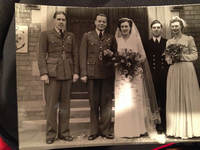 |
Kevin and Pat's Wedding 20 Oct 1945
Pat met Kevin at a dance in Grimsby in early 1944 where she worked as a nurse and they subsequently were married in October 1945 |
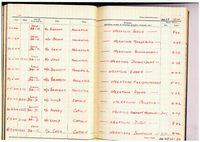 |
K Mac Aleavey Log book
Ops with 550 Sqdn |
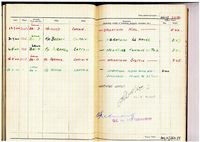 |
K Mac Aleavey Log book
Ops with 550 Sqdn |
S/Ldr Kevin Mac Aleavey did his basic navigator training course from December 40 to March 41 on Ansons and Fokker F22s (reg G-AFXR/G-AFZP), followed by bombing training on Herefords, Blenheims and Hampdens.
Then he was in 144 Squadron and on his first operation on Hampden AD921 to Ameland on 27 Aug 41.
Between then and 01 April 42, he flew 30 operations including 2 over 9hrs (Berlin on 7/9/41 and Rostock on 11/9/41) and 3 over 8 hrs to Hamburg, Limfjord and Frankfurt (long time to be up in a Hampden!).
On 12/02/42, his logbook records a 4 hr daylight "Operations-Battleships (Channel)" in AD801 - Capt was Sqn Ldr Bennett (see log book page above), quite possibly the (later) W/Cmdr Bennett he flew with in 550 Sqdn in April/May 1944.
From April 42 to Sept 42, his flying seems to be mainly torpedo flights (144 Sqdn transferred to Coastal Command in April 42) and after that non-operational flights (training?) mainly on Hampdens but also on various other types inc Wellingtons, Ansons and Mosquitos. His first Lanc flight was a 'cross country' in October 43 and the next entry in the logbook is the Berlin operation on 01/01/44.
He served in 550 Sqdn as a navigator: he joined 550 Sqdn as Senior Navigation Officer: 25 Nov 43 - 19 Jul 44, and then served as Flight Commander A Flight from 20 Jul 44 until he was shot down on 28th August, or as he said in his first letter to Pat (his later wife) from POW camp - 'caught a packet but luckily was able to "hit the silk" and get on terra firma'.
In total S/Ldr Mac Aleavey flew 16 missions with 550 Sqdn in 1944, the final one being with the Beeson crew to Wemars-Cappel on 28 Aug 1944 when it received a direct hit from a flak battery near Dunkirk. The Lancaster went down in flames and exploded. He spent the remainder of the war as a PoW.
| Barth Hard Times - Last edition 05 May 45.
2 page newsletter from his POW camp titled "Barth Hard Times - Last edition 05 May 45". His log book records his flight home from Barth on 11th May in a B17 |
S/Ldr Mac Aleavey died in 1972 in Mexico City where he worked as the Director of the International Civil Aviation Organisation (ICAO). After leaving the RAF in October 1946, he had been Chief Navigator at Aer Lingus before joining ICAO in Montreal in 1948.
